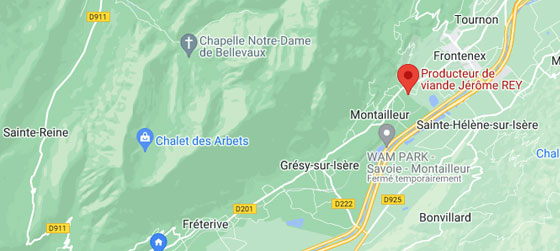1. Introduction: Extending Pedestrian Safety Principles Through Technology
Pedestrian safety has long depended on foundational infrastructure such as crosswalks, signage, and traffic signals. These traditional measures have saved countless lives by providing clear zones for pedestrians and alerting drivers to their presence. However, as urban environments grow denser and traffic volumes increase, these static solutions face limitations in addressing dynamic, real-time risks. To bridge this gap, technological innovations are now playing a pivotal role in augmenting and extending the safety principles established by crosswalks. These advancements not only reinforce existing measures but also introduce proactive, intelligent systems that adapt to changing traffic conditions, ultimately creating safer environments for pedestrians worldwide.
3. Intelligent Traffic Management Systems
4. Pedestrian Detection and Alert Systems
5. Wearable and Personal Safety Devices for Pedestrians
6. Vehicle-to-Pedestrian (V2P) Communication Technologies
7. Data Analytics and Predictive Modeling for Safer Environments
8. Challenges and Ethical Considerations in Deploying Pedestrian Safety Technologies
9. Bridging Technology and Traditional Infrastructure
10. Returning to Crosswalks: How Technological Innovations Reinforce Foundational Safety Measures
2. The Evolution of Pedestrian Safety Technologies
The journey of pedestrian safety technology began with basic signaling devices and reflective signage designed to increase visibility. In the late 20th century, the introduction of pedestrian-activated signals and countdown timers marked significant progress, offering pedestrians better control over crossing times. As digital and sensor technologies advanced, early interventions included infra-red sensors that detected motion and automated crossing lights. These innovations addressed the limitations of static crosswalks by providing dynamic responses to pedestrian presence and traffic flow, reducing the likelihood of accidents caused by driver inattention or misjudgment.
Today, these foundational safety measures serve as a platform for sophisticated systems that analyze real-time data and communicate proactively with both pedestrians and vehicles. Integrating sensors, cameras, and AI-driven analytics enables a shift from reactive to preventative safety strategies, ensuring that technology works in harmony with traditional infrastructure to create smarter, safer urban environments.
3. Intelligent Traffic Management Systems
Modern cities increasingly rely on intelligent traffic management systems (ITMS) to optimize flow and enhance safety. These systems utilize real-time data from cameras, induction loops, and connected devices to monitor traffic conditions continuously. Adaptive signal control algorithms adjust traffic lights dynamically, prioritizing pedestrian crossings during peak times or in congested zones.
For example, a case study in Singapore demonstrated a 20% reduction in pedestrian accidents following the deployment of adaptive traffic signals that responded to live pedestrian and vehicle flows. Similarly, in New York City, integrated traffic sensors have contributed to a marked decrease in jaywalking incidents and vehicle-pedestrian collisions, especially in busy intersections.
Impact on Pedestrian Safety in High-Traffic Urban Areas
- Reduced wait times: Pedestrians experience fewer delays, decreasing risky jaywalking behavior.
- Enhanced visibility: Dynamic signals and LED displays inform pedestrians when it is safe to cross.
- Proactive traffic control: Vehicles and pedestrians are managed in real-time, minimizing conflict points.
4. Pedestrian Detection and Alert Systems
Sensor-based pedestrian detection technologies have advanced significantly, incorporating radar, lidar, and computer vision systems to identify pedestrians in real time. These sensors are often embedded in traffic lights, street furniture, or roadside units, continuously scanning for human presence even in low visibility conditions.
Once detected, these systems can trigger a series of safety responses, such as extending crossing signals, activating warning lights, or alerting approaching vehicles through V2X (vehicle-to-everything) communication. For example, several cities have installed pedestrian detection cameras at busy intersections, which automatically activate flashing warning signals when pedestrians are present, effectively reducing collisions during peak hours.
Integration with Vehicle Systems and Traffic Lights
The integration of pedestrian detection with vehicle and traffic control systems is crucial. When sensors detect a pedestrian, connected traffic lights can be overridden to give pedestrians priority, while vehicle onboard systems receive alerts about nearby pedestrians, enabling automatic braking or alerting the driver. This synergy exemplifies how smart infrastructure can prevent accidents before they happen, building upon the safety principles of traditional crosswalks with technological precision.
5. Wearable and Personal Safety Devices for Pedestrians
Personal safety devices have become increasingly prevalent, offering pedestrians additional layers of protection. Smart wearables, such as wristbands or glasses equipped with movement sensors and GPS, can alert users to oncoming vehicles or unsafe crossing conditions. For instance, some devices vibrate or emit sounds when approaching traffic exceeds safe limits or when a vehicle is detected nearby.
Smartphone applications further enhance safety by providing real-time notifications about hazardous zones, unsafe intersections, or upcoming traffic signals. Navigation apps now incorporate safety alerts that warn pedestrians if they are about to cross in a high-risk area. Moreover, augmented reality (AR) overlays can project safe crossing zones directly into the pedestrian’s field of view, increasing awareness and reducing hesitation or risky crossings.
6. Vehicle-to-Pedestrian (V2P) Communication Technologies
V2P communication represents a frontier in pedestrian safety, enabling vehicles and pedestrians to exchange information through embedded or mobile devices. Connected smartphones and vehicle sensors work together to provide proactive alerts, warning both drivers and pedestrians of potential conflicts before visual or auditory cues would typically occur.
In practice, this technology can prevent blind-spot accidents by alerting drivers when a pedestrian is in their blind zone, even if the pedestrian is not directly visible. Pedestrians, meanwhile, receive notifications on their devices about approaching vehicles, especially in low-visibility conditions like fog or at night.
Looking ahead, autonomous vehicle systems are being designed to interpret pedestrian movements more accurately and communicate intentions, such as yielding or stopping, fostering a more harmonious interaction between humans and machines on roads.
7. Data Analytics and Predictive Modeling for Safer Environments
Big data analytics enable city planners and traffic authorities to identify high-risk zones, peak danger times, and behavioral patterns that contribute to accidents. By analyzing data from sensors, cameras, and incident reports, predictive models can forecast potential hazards and inform targeted interventions.
For example, predictive analytics in Chicago revealed that certain intersections experienced spikes in jaywalking and near-misses during specific hours, prompting the installation of additional signage, lighting, and traffic calming measures. These data-driven strategies exemplify how technological insights can optimize resource deployment and infrastructure upgrades to improve pedestrian safety.
Lessons from Predictive Safety Analytics
- Targeted infrastructure improvements based on high-risk zones
- Dynamic adjustment of traffic signals during peak danger periods
- Enhanced public awareness campaigns tailored to behavioral insights
8. Challenges and Ethical Considerations in Deploying Pedestrian Safety Technologies
While technological solutions offer tremendous safety benefits, they also introduce challenges related to privacy, data security, and equitable access. Collecting detailed movement and location data raises concerns about surveillance and misuse, necessitating robust security protocols and transparent policies.
Ensuring that underserved communities benefit equally from these innovations is another critical issue. Deployment strategies must consider disparities in infrastructure, digital literacy, and access to technology to prevent widening existing safety gaps.
Furthermore, over-reliance on technology should not diminish human judgment and community engagement. Safety systems need to complement, not replace, education campaigns and infrastructural investments rooted in local context.
9. Bridging Technology and Traditional Infrastructure: A Holistic Approach to Pedestrian Safety
Integrating advanced technological solutions with traditional infrastructure creates a comprehensive safety net. Effective crosswalks, signage, and traffic signals form the backbone of pedestrian safety, while sensors, data analytics, and communication systems add layers of intelligence and responsiveness.
Community engagement is vital; educating pedestrians about new technologies and involving local stakeholders in planning ensures acceptance and optimal use. Lessons from gaming and traffic show that combining user-centered design with technological innovation yields the best results, fostering environments where safety is a shared responsibility.
10. Returning to Crosswalks: How Technological Innovations Reinforce Foundational Safety Measures
Technological advancements do not replace the importance of traditional crosswalks; instead, they reinforce and enhance these proven safety features. For instance, smart crosswalks equipped with LED signals and sensors can adapt to pedestrian flow, making crossings safer and more efficient.
Hybrid solutions, such as interactive signage combined with real-time data and vehicle communication, have shown to significantly reduce pedestrian accidents. These integrated approaches embody the core lesson from «How Crosswalks Save Lives: Lessons from Gaming and Traffic» — that safety is best achieved when foundational infrastructure and innovative technology work hand in hand.
Ultimately, building safer pedestrian environments requires a holistic mindset—leveraging past lessons, embracing future innovations, and fostering community collaboration to ensure every step taken on the road is a safe one.

